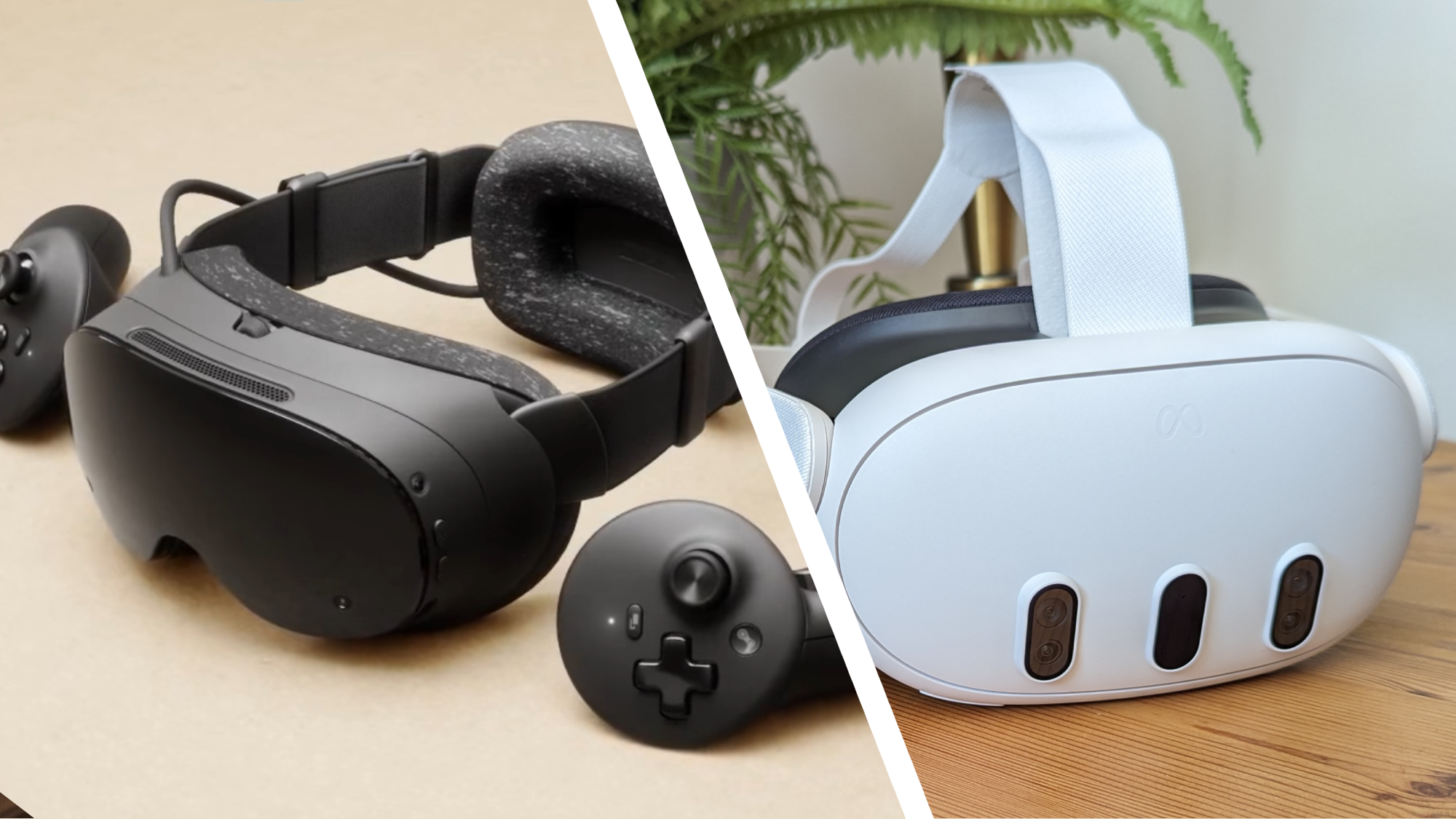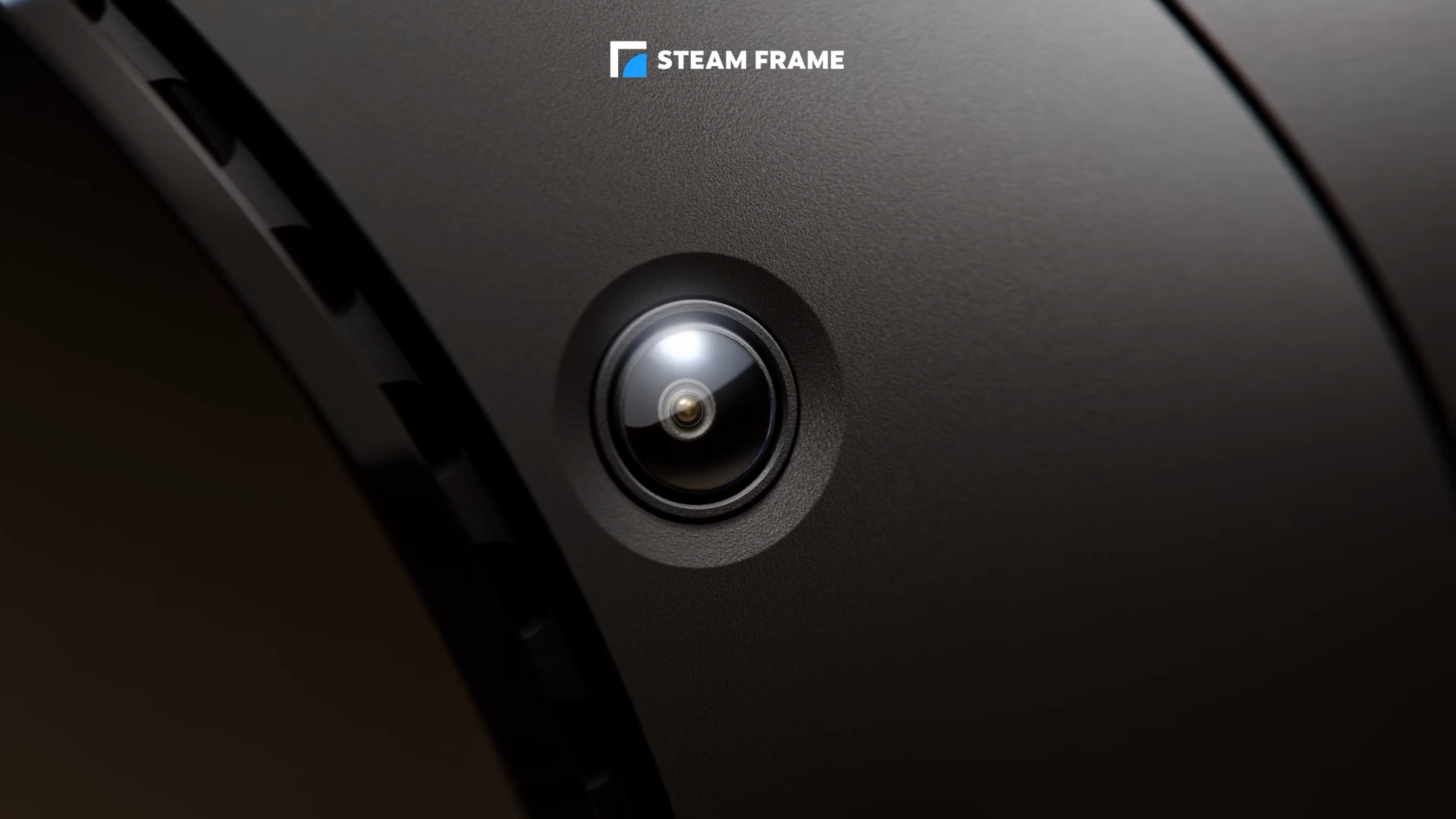Steam Frame vs Meta Quest 3: Valve's VR headset swings at the king, but we're missing one key detail
Valve's new VR headset is coming for the Quest 3's crown

A broken clock is right eventually – after months of leaks and speculation Valve has finally debuted the Steam Frame, a brand new VR headset that’s swinging at the current king (the Meta Quest 3) in a major way.
The new headset boasts some impressive specs, potentially world-class software support, and a design that could make it the all-day headset that the Samsung Galaxy XR and Apple Vision Pro wish they could be.
But here I want to focus on how it competes with the reigning VR monarch, and the only VR headset I think you should buy: the Meta Quest 3.
Specs: The Steam Frame is the clear winner
Overall, the Valve headset is an upgrade on the Meta Quest 3, with the Steam Frame either matching or beating Meta in (almost) every metric.
Valve's contender boasts 16GB instead of 8GB of RAM, and up to 1TB of storage instead of topping out at 512GB. And while the smaller storage Frame model is only 256GB, it has an SD slot so you can expand its storage), plus a “4nm Snapdragon ARM Processor.”
The Meta Quest 3’s Snapdragon XR2 Gen 2 fits this description, but Valve’s decision not to name the chipset suggests it's opting for something newer – perhaps an unannounced XR2 Gen 3.

You’ll also find the optics and visuals should be on par between the two as both devices boast pancake optics and an LCD screen setup with a 2,160 x 2,160 pixel per eye resolution (the Meta Quest 3's is a slightly different 2,064 x 2,208 per eye). Both also offer a variable refresh rate of up to 120Hz – the Steam Frame can actually push itself to 144Hz with an experimental setting.
Sign up for breaking news, reviews, opinion, top tech deals, and more.
The most obvious downgrade on the Steam Frame, however, is the return to monochrome camera passthrough (in other words, black and white rather than full color). This means the Frame will be a virtual reality headset first and foremost, not the mixed reality affair Meta, Samsung, Apple, and others have focused on in recent years.
During MR’s early days this wouldn’t be a bad thing, and in fairness most MR games of note offer effective VR modes too, but it does feel like a surprising tweak on what feels like a stable headset formula in 2025. However, Valve has also teased a “user accessible expansion port” which leaves the door open to the possibility of an optional module that adds full-color passthrough at an added cost.

Software: Finally, a true Meta rival?
I’ve said it before and don’t know if I will ever stop saying it: Meta has superb software in HorizonOS. This has meant it has the best access to apps and games among standalone headsets. The only rival that came close as a VR platform is Steam, but that hasn’t been a standalone platform… until now.

The Steam Frame runs on SteamOS – the same as the Steam Deck and new Steam Machine – and that could be the leg-up a Meta rival has needed. There’s no need to include caveats here like I’ve had to do with Android XR and visionOS – we know SteamOS has a broad catalogue of VR and non-VR applications ready to go, and that library will only continue to grow.
Combine that with the Steam Frame’s inbuilt direct-to-PC wireless adapter for wireless PCVR gaming and you have a machine that I truly believe Meta should worry about from a software perspective – especially if the much-rumored new Steam exclusives see the light of day.
Design: The Frame is a true all-day headset

Design-wise, VR headsets are much of a muchness. We don’t yet have precise battery life details for the Steam Frame to compare it to the Meta Quest 3, but I’m worried it might be shorter because the Frame is much lighter than its rival: it weighs 435g compared with 515g.
What’s more, Valve describes it as having a “modular design” with weight details specifically outlining the weight without the battery strap at just 190g. This is most likely because the strap is removable like on the HTC Vive XR Elite, allowing the Frame to be used as a pair of VR goggles provided you connect it directly to a power source.
If so this wouldn’t just be a Quest 3 killer, this is an everything killer.
Forget wearing a bulky Samsung Galaxy XR or Apple Vision Pro at your desk all day for XR productivity complete with a multi-monitor setup. If the Steam Frame can boast a sophisticated XR desktop layout in its 190g form – heck even in its 435g form – I can’t see why you’d choose anything else (especially factoring in its versatility in other areas as a standalone VR machine).

Price: At what cost?
The most important yet-to-be-answered question is price: Valve hasn't told us how much a Steam Frame will cost.
Now, looking at the specs I can assure you that it will cost more than a Meta Quest 3, and leaks very much support that assessment.
It's tipped to cost $1,200 (around £915 / AU$1,830). That would sandwich it between the Meta Quest 3 ($499.99 / £469.99 / AU$1,049.99) and the Samsung Galaxy ($1,799, availability and pricing for other regions is TBC), and this feels right.
The Steam Frame has more RAM than the Quest 3 and likely a better chipset, as well as eye-tracking sensors which we only see in more premium headsets. But it also doesn't offer the ultra-crisp OLED panels of the Galaxy XR, instead opting for displays comparable to Meta's headset.

The Steam Frame costing more than the Quest 3 is no bad thing inherently.
As I've highlighted, the Steam Frame has solid hardware, and a standalone SteamOS has the markings of a truly viable HorizonOS alternative. On paper, this looks like it might be the very best VR headset for gamers and folks who want a great higher end option.
The Meta Quest 3, however, looks set to retain its title as the mid-range / budget king, with the Meta Quest 3S an even more temptingly-affordable offering for many.
Early verdict: the exciting VR headset we needed

Right now it's impossible to declare a ‘winner’, but the Steam Frame might very well be the most exciting VR headset we've seen in some time.
If Valve can stick the landing, everyone in the XR space should be worried. The only potential drawback is that a higher price tag could overly restrict the Steam Frame's appeal and leave the Meta Quest 3 as the reigning champion.
It’s an exciting time in the XR space, and the Steam Frame’s 2026 launch can’t come soon enough.
Follow TechRadar on Google News and add us as a preferred source to get our expert news, reviews, and opinion in your feeds. Make sure to click the Follow button!
And of course you can also follow TechRadar on TikTok for news, reviews, unboxings in video form, and get regular updates from us on WhatsApp too.

Hamish is a Senior Staff Writer for TechRadar and you’ll see his name appearing on articles across nearly every topic on the site from smart home deals to speaker reviews to graphics card news and everything in between. He uses his broad range of knowledge to help explain the latest gadgets and if they’re a must-buy or a fad fueled by hype. Though his specialty is writing about everything going on in the world of virtual reality and augmented reality.
You must confirm your public display name before commenting
Please logout and then login again, you will then be prompted to enter your display name.